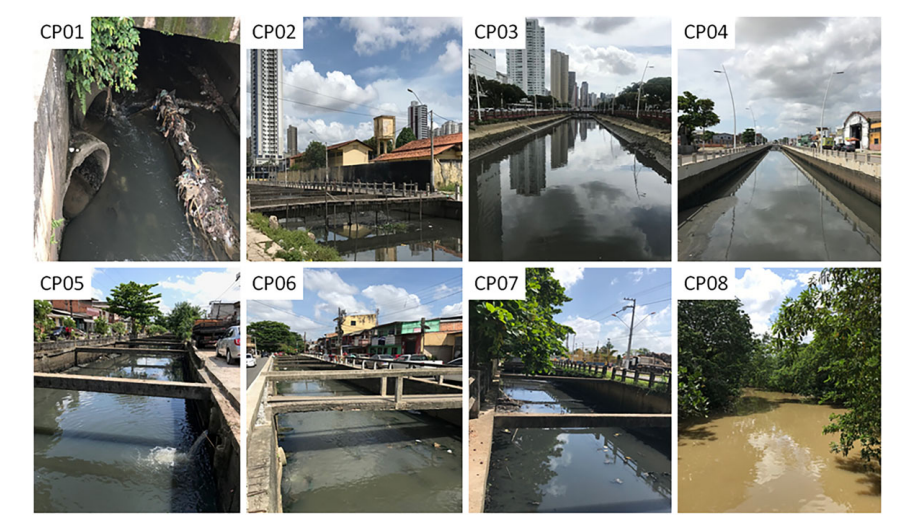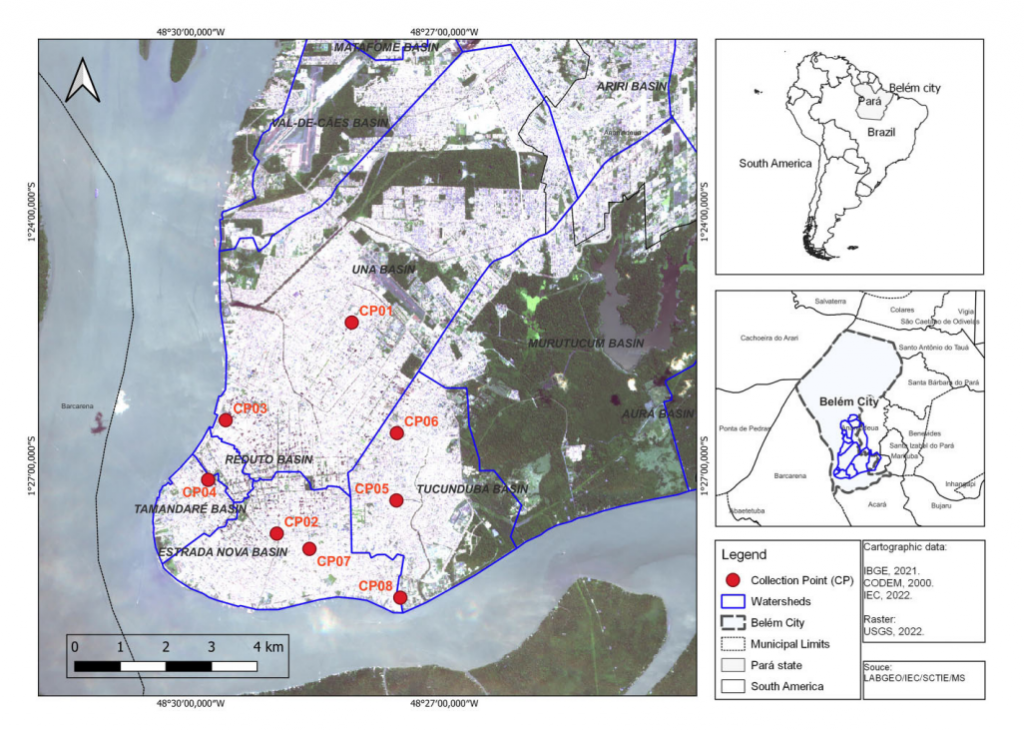Metals and microorganisms pollute water bodies in the COP30 City, study finds
12 de February de 2025

By Fabyo Cruz – From Cenarium
BELÉM (PA) – A study by the Evandro Chagas Institute (IEC), published in 2024, revealed an alarming state of water quality in drainage channels and rivers of Belém, the capital of Pará. The research identified a vast diversity of potentially dangerous microorganisms, including antibiotic-resistant bacteria and viruses that cause gastrointestinal diseases, as well as high levels of heavy metals. The situation is worsened by poor sanitation, which increasingly exposes the population to risks.
Researchers analyzed eight collection points in different hydrographic basins of Belém and found 473 families of bacteria and 83 families of viruses in the water bodies. Among the detected microorganisms were norovirus GI and GII, sapovirus, astrovirus, bocavirus, adenovirus, and crAssphage, all associated with gastrointestinal infections. Additionally, bacteria such as enteroinvasive Escherichia coli and Shigella spp. were identified, both responsible for outbreaks of diarrhea and intestinal infections.

Another concerning finding was the presence of 66 bacterial resistance genes, including blaKPC, which grants resistance to carbapenem antibiotics—used as a last resort in treating severe infections. This resistance, coupled with widespread fecal contamination, poses a significant public health threat.
Heavy metal contamination was also a red flag. High levels of cadmium (Cd), iron (Fe), and manganese (Mn) were found, which, in excess, can cause anything from changes in water quality to severe diseases such as kidney failure, osteoporosis, and cancer.

Poor Sanitation
The degradation of Belém’s water bodies is directly linked to the lack of proper sanitation. According to the Brazilian Association of Sanitary and Environmental Engineering (Abes), only 12.99% of the city’s generated sewage is treated, while the rest is dumped directly into rivers and channels without any treatment.
Sanitary engineer Valdinei Silva, a professor at the Federal Institute of Pará (IFPA) and vice president of Abes-PA, reinforced this historical relationship between poor sanitation and environmental degradation in an interview with CENARIUM. He cited studies conducted since the 1980s that already warned about the impacts of organic waste discharged into the city’s water bodies.
“Each inhabitant produces about 54 grams of biochemical oxygen demand, which is a parameter used to indicate the potential reduction of oxygen in water. In a 2002 study, we estimated that 40 tons of organic waste were being released daily into the Guajará Bay,” the specialist stated.

Silva highlighted that even decades ago, it was already evident that the city’s channels could not handle the amount of sewage being discharged. “In 1985, there was an idea to install septic tanks in residences to treat sewage before disposal, but even at that time, studies showed that the channels’ capacity was already insufficient. Now, with unregulated population growth, the situation has become even worse,” he explained.
Beyond environmental impact, the professor warned of direct health risks to the population. “It’s very common to hear people say: ‘Oh, but I used to swim in that canal 15 or 20 years ago.’ Back then, the channels still had a more dynamic exchange with the river and the Guajará Bay. Today, the organic waste load is so high that the oxygen in the water is drastically reduced, favoring anaerobic processes that make the water dark and extremely polluted,” he emphasized.
Silva pointed out that many people overlook the fact that when the tide rises, contaminated water floods the streets, exposing residents to various infectious agents. “If there is no sewage treatment system, where does it go? Into the channels and rivers. It’s crucial to take precautions when stepping into floodwater during high tide in Belém, as it carries a large number of contaminants,” he warned.
Necessary Measures
Given this scenario, IEC researchers emphasize the urgent need for immediate actions to mitigate the impacts of water pollution. Suggested measures include:
- Expanding sewage treatment and investing in sanitation infrastructure to prevent direct dumping into rivers and channels;
- Continuous water quality monitoring to identify contamination sources and take preventive action;
- Educational campaigns to raise public awareness about proper waste disposal and the importance of preserving water bodies;
- Stricter environmental oversight, with penalties for illegal sewage and industrial waste disposal.

